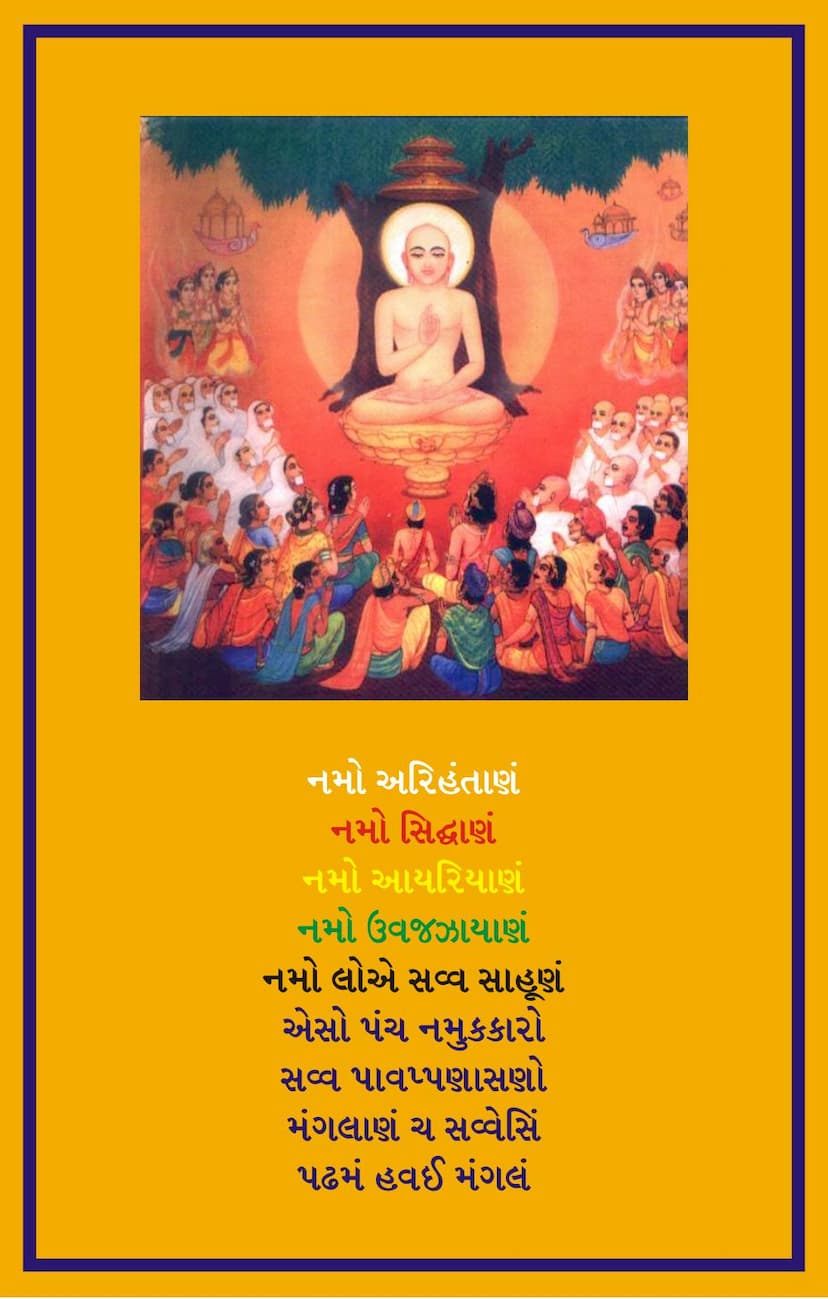Agam 27 Chhed 04 Dashashrutskandh Sutra Sthanakvasi
Added to library: September 1, 2025

Summary
This comprehensive summary is based on the provided Jain text, "Agam 27 Chhed 04 Dashashrutskandh Sutra Sthanakvasi" by Ghasilal Maharaj. The text is a detailed commentary, "Munihershini Teeka," on the Dashashrutaskandh Sutra, offering explanations in Gujarati, Hindi, and Sanskrit.
Overall Purpose:
The Dashashrutaskandh Sutra, as explained in this commentary, is a fundamental Jain text that serves as the "trunk" of the tree of Jain conduct. Its primary aim is to guide all beings towards spiritual liberation (Moksha) by helping them detach from worldly desires, dualities like attachment and aversion, and ultimately achieve self-realization.
Structure and Content:
The commentary meticulously breaks down the Dashashrutaskandh Sutra into its ten main chapters (adhyan), explaining the core concepts and guidelines within each.
-
Chapter 1: Asamādhsthān (Non-Contemplative States): This chapter, also known as 'Asamādhsthān,' describes twenty states that lead to mental agitation and hinder spiritual progress. It emphasizes the importance of overcoming these to achieve mental equanimity, which is crucial for moving towards Moksha.
-
Chapter 2: Shabal (Defects/Impurities): This chapter details twenty-one "Shabal" defects that affect the spiritual conduct of monks. It explains how these defects arise from non-contemplative states and how recognizing and eradicating them is essential for maintaining purity of character.
-
Chapter 3: Āshatanā (Disrespect/Transgressions): This chapter outlines thirty-three forms of "Āshatanā" or transgressions, which lead to the complete destruction of virtues like knowledge. It highlights the importance of avoiding these faults to maintain respect for the spiritual path and its practices.
-
Chapter 4: Gaṇisampadā (Qualities of Leaders/Acharyas): Following the discussion of defects, this chapter describes the eight "Gaṇisampadā" or divine qualities possessed by spiritual leaders (Acharyas). These qualities are attained by those who have overcome the defects mentioned in previous chapters and are instrumental in guiding the spiritual community. The chapter also elaborates on the four types of Vinaya (respectful conduct) essential for spiritual progress.
-
Chapter 5: Chittasamādhisthān (Contemplative States of Mind): This chapter focuses on ten states of mind that lead to "Chittasamādhi" or mental concentration and stability, which is a prerequisite for spiritual advancement. It describes how achieving these states allows the mind to remain focused on the path to Moksha.
-
Chapter 6: Upāsakpratimā (Vows/Stages for Lay Disciples): This chapter details eleven "Upāsakpratimā" or stages of spiritual discipline for lay disciples (Shravakas). It outlines specific practices and renunciations that progressively lead lay followers towards spiritual merit and stability.
-
Chapter 7: Bhikṣupratimā (Vows/Stages for Monks): This chapter describes twelve stages of discipline for monks ("Bhikṣupratimā"). It outlines the specific practices, renunciations, and conduct expected of monks at each stage, emphasizing the rigorous adherence to rules for spiritual purity. It also details specific rules for conduct, such as acceptable food and dwelling places, and how to handle various situations while maintaining equanimity.
-
Chapter 8: Paryuṣaṇaparva (Festival of Paryuṣaṇā): This chapter focuses on the significance of the Paryuṣaṇā festival, which involves the study of the 'Antakṛt Daśāṅga Sūtra' and the recitation of Lord Mahavir Swami's life story. It highlights the importance of observing this period with devotion and discipline.
-
Chapter 9: Mahāmohanīyasthān (Great Deluding Karmas): This chapter delves into thirty states or actions that generate "Mahāmohanīya Karma," the deluding karma that leads to spiritual blindness and hinders progress. It explains these states in detail, illustrating how they lead to negative consequences and further entanglement in the cycle of birth and death.
-
Chapter 10: Nidān (Auspicious Desires/Resolutions): This concluding chapter discusses various forms of "Nidān," which are specific desires or resolutions made during penance or spiritual practice. It categorizes these into several types, including those related to achieving human or divine states, and explains how unfulfilled or misguided nidāns can lead to negative karmic consequences. It particularly highlights the importance of selfless devotion and avoiding desires tied to worldly attachments or future outcomes, emphasizing that true spiritual practice leads to liberation without seeking personal gain.
Key Themes and Concepts:
- Vinaya (Respectful Conduct): The text repeatedly stresses the importance of Vinaya, not just towards spiritual leaders but also in all interactions and practices.
- Yama and Niyama (Restraints and Observances): The commentary implicitly or explicitly guides the reader on various Yamas (restraints) and Niyamas (observances) essential for spiritual discipline.
- Karma and Liberation: The entire text is underpinned by the Jain principles of Karma, emphasizing how actions lead to consequences and how the ultimate goal is to escape the cycle of birth and death (Moksha) through righteous conduct and spiritual knowledge.
- Importance of Right Knowledge and Conduct: The text consistently balances the importance of right knowledge (Jnana) and right conduct (Charitra) as the twin pillars of the Jain path.
- Discipline and Detachment: The detailed descriptions of the stages of discipline for monks and lay disciples highlight the Jain emphasis on self-control, austerity, and detachment from worldly pleasures.
- Ethical Conduct: The detailed explanation of Asamādhsthān, Shabal, Āshatanā, and Nidān highlights the Jain emphasis on ethical conduct, mindfulness, and avoiding actions that create negative karma.
Commentary and Translation:
The commentary by Ghasilal Maharaj, "Munihershini Teeka," is presented with a clear and accessible style. It includes original Sanskrit and Prakrit texts along with their translations and explanations in Hindi and Gujarati, making the profound teachings of Jainism available to a wider audience. The publisher, A B Shwetambar Sthanakvasi Jain Shastroddhar Samiti, plays a crucial role in preserving and disseminating these ancient scriptures.